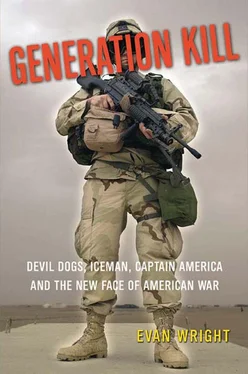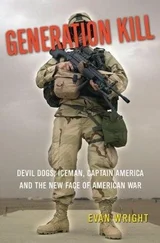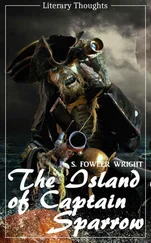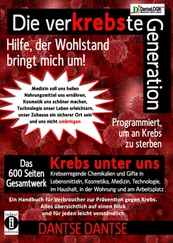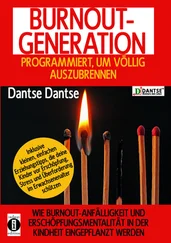Now, as the first danger-close artillery rounds scream in and burst over the nearby field, Burris pops his head over the berm. He thinks it’s enemy fire, and his first instinct is to get up and see where it’s coming from. A piece of shrapnel thuds into the ground behind him. Someone yells at him to get the fuck down. He rolls over, laughing, while the artillery strike of twelve DPICM cluster munitions saturates enemy positions with nearly 600 mini-bombs. The Iraqi guns are silenced.
AS THE ARTILLERY called in by Alpha booms ahead of us, Colbert and his team remain halted in the canal area. It’s about three in the afternoon. We’ve been stopped for an hour. No more fire has come from the hamlet on the left. Colbert has become obsessed with the little building that looks like a Spanish church 150 meters or so across the dry canal. Colbert spotted someone’s head popping up behind the parapet on the roof. Now he’s watching through the scope of his M-4 rifle, getting ready to shoot. Person and Trombley crouch by his side with their weapons out, passing binoculars back and forth. Everyone thinks the guy up there is a sniper, and the team is going to take him out next time he shows his face.
“There,” Person says.
“Don’t shoot!” Colbert shouts. He throws the tip of his barrel up and lets out a sharp breath. “Jesus fucking Christ! It’s a kid.”
We get back into the Humvee. Trombley roots around in the ratfuck bag for a spaghetti. He sucks it out straight from the foil pouch. “I almost shot him,” he says.
“Not yet,” Colbert says. “Put your weapon on safety.”
“Goddamn kid playing peekaboo.” Colbert shakes his head. It’s the first time I’ve seen him rattled.
“What are we doing?” Trombley asks, as more Marine artillery booms by the road ahead.
“The battalion is trying to find a way around that town up ahead, so we can link up with RCT-1 on the other side.”
“Why don’t we go through it?” Trombley asks.
“It’s full of bad guys,” Colbert says. “We’d get smoked.” He gets out and pisses.
°
AL GHARRAF, the town lying just ahead of First Recon, is about two kilometers from end to end, a dense mass of two- and three-story houses and apartment blocks, like Nasiriyah, though with a much smaller population: around 20,000 inhabitants. By three-thirty in the afternoon, with First Recon’s leading elements in Alpha perched on the eastern side of Al Gharraf, RCT-1 has reached the western side of the town. Col. Dowdy, the commander of RCT-1, halts his forces outside of Al Gharraf when one of his companies is ambushed on the outskirts. His Marines sustain several casualties and kill between twenty and thirty attackers. Originally, Dowdy had contemplated entering Al Gharraf with tanks and other armored vehicles. But as he did at Nasiriyah, Dowdy pulls his forces back—this time into an open desert at the northern fringes of the town—and hesitates. Because of the shamal now peaking with its impenetrable dust cloud, helicopters are unable to fly over the town to see what’s inside. Just three days earlier, Task Force Tarawa had suffered approximately 100 casualties, with eighteen dead, when its commanders had sent a small force of Marines into Nasiriyah. Dowdy apparently doesn’t want to make the same mistake.
First Recon’s commander, Lt. Col. Ferrando, has no such compunctions. Initially, when his units came under intense fire on the eastern outskirts of the town, Ferrando contemplated circumventing it and finding another route to link up with RCT-1 on the other side. But by four in the afternoon, he decides to send the whole battalion straight through the town. While Ferrando might seem to his men like a martinet, obsessed with mustaches and the Grooming Standard, as a commander, he possesses a bold streak verging on recklessness. When I later ask him why he sent his lightly armed battalion through a hostile town—one that a better-equipped force dared not enter—he says, “I thought we’d cause some problems for those motherfuckers in that town.”
When the Marines in Alpha are told to jump in their vehicles and get ready to drive through the town, they are incredulous. Capt. Patterson, who’s found what looks to be a viable route around the town on his maps, attempts to debate the issue with Ferrando over the radio. Ferrando cuts him off: “Patterson, you have your orders. Do you understand?”
Burris, who several minutes ago had nearly been hit by friendly shrapnel, learns of the mission when Patterson approaches his vehicle commander with a map of the town. Burris’s team will be in the lead Humvee. Patterson spreads out the map, puts his finger on the entrance to the town, slides it to the other side and tells Burris and the other men, “Get me from here to there as fast as you can.”
Burris says, “That’s insane, but okay.” He and his fellow Marines climb into their Humvee. They are ordered to start driving immediately. Ferrando and others in charge figure the effects of their artillery strike might wear off, and enemy shooters might regroup if given too much time.
Burris’s team, in the lead of Alpha and the entire battalion, race their Humvee up to about forty miles per hour as they make the final approach toward the town. Its dominant feature is the mosque, with its stunning, blue dome rising on the edge. To enter the town, Marines speed past high stucco walls on the left. Straight ahead there’s a three-story building with a row of tall, thin windows on the upper floor. It almost looks like the road goes straight into this structure, but instead it turns abruptly left, forcing the driver in Burris’s Humvee to hit the brakes as they cut into the town.
The street that had been a narrow lane on the outskirts becomes a broad, straight avenue, only now it’s filled with rubble, burned vehicles and downed telephone poles from Marine artillery strikes. The main thoroughfare, like a lot of others in Iraqi towns, has a claustrophobic feel, since it’s hemmed in on both sides with either high stucco walls or building fronts. The sky and the whole town before them are almost yellow from the dust storm. Wind blasts through the streets—and Burris’s open Humvee—at fifty miles per hour.
Burris hears shots, but it’s tough to see anything. The shamal winds sandpaper the lenses of the goggles the Marines wear. Some men remove the fogged goggles, but their eyes fill with tears from the dust. Burris glimpses three armed men in an alley and fires a 203 round in their direction. He has no idea if he hits them. Then Burris’s team hits a river of “crap water” running through the middle of the town—the result of a blown sewer main or, just as likely, the natural state of things in this impoverished place. Sewage sprays all over his face. Then he hears his Humvee’s driver and another Marine shouting, “Left or right?”—repeating it urgently.
There’s a T intersection ahead, and no one can figure out which way to go. They have the map out, ripping and flapping in the wind, and are trying to study it. “Left! Left!” one of them shouts, finally solving the puzzle.
They sideswipe a partially downed telephone pole, then, two to three minutes after entering Al Gharraf, they arrive on the western edge of the town, where Burris has his most terrifying moment of the invasion. Hundreds of Marines from RCT-1 are dug in, facing them with rifles, machine guns and Javelin, AT-4 and TOW missiles. Burris watches in horror as dozens of Marines drop their heads onto their sights, getting ready to open fire on his Humvee. He ducks, expecting a hail of bullets and missiles, but all he hears is the wind. Given the shaky communications between different Marine units, nobody in First Recon was completely confident the guys in RCT-1 waiting on the other side of the town would know they were coming. But the Marines in RCT-1—some of whom later say they were stunned when they saw First Recon’s Humvees careening out of the town they considered impassable—hold their fire.
Читать дальше
